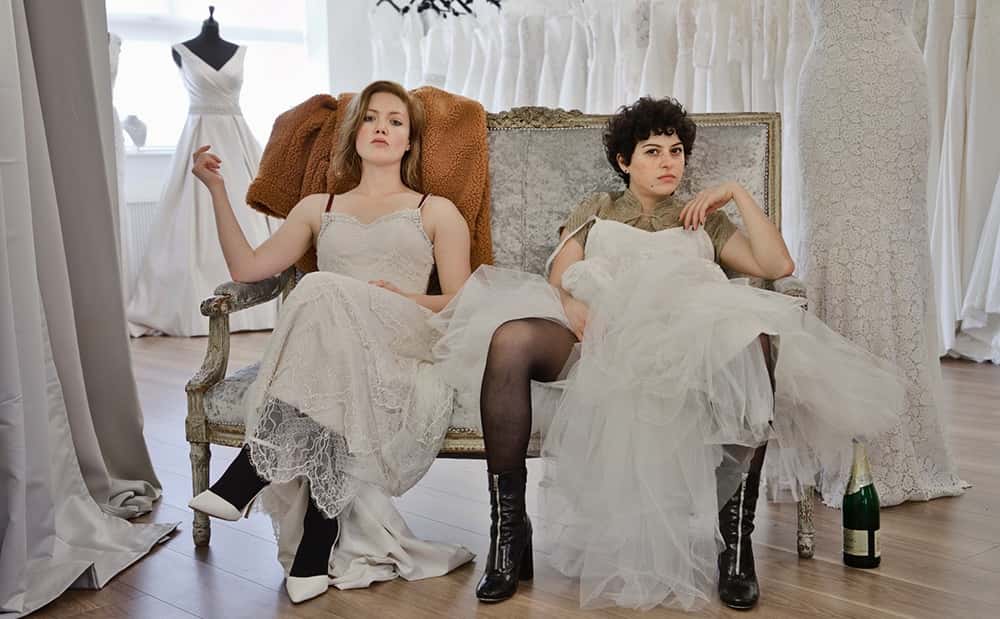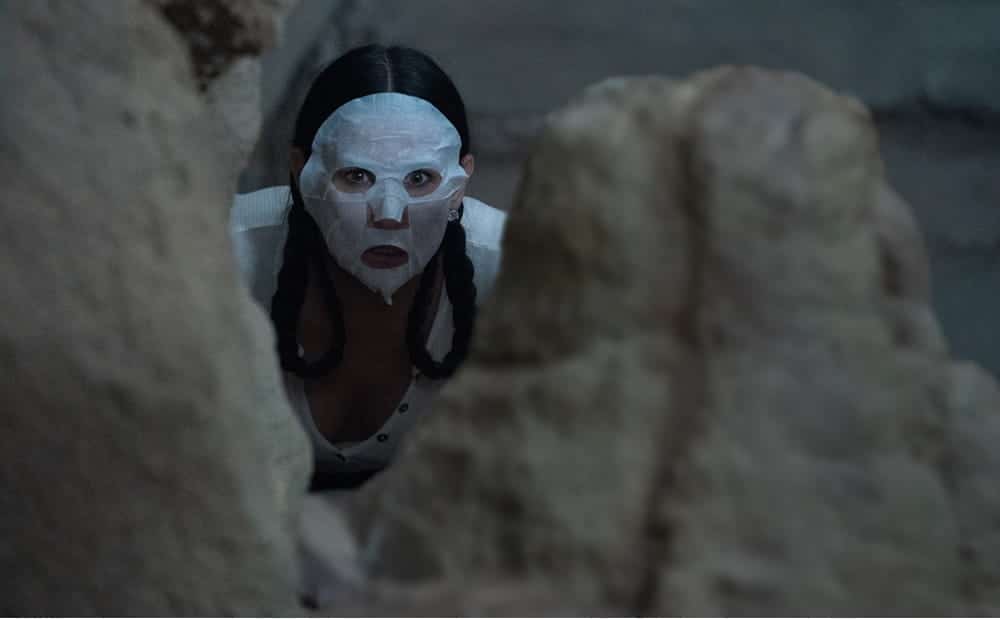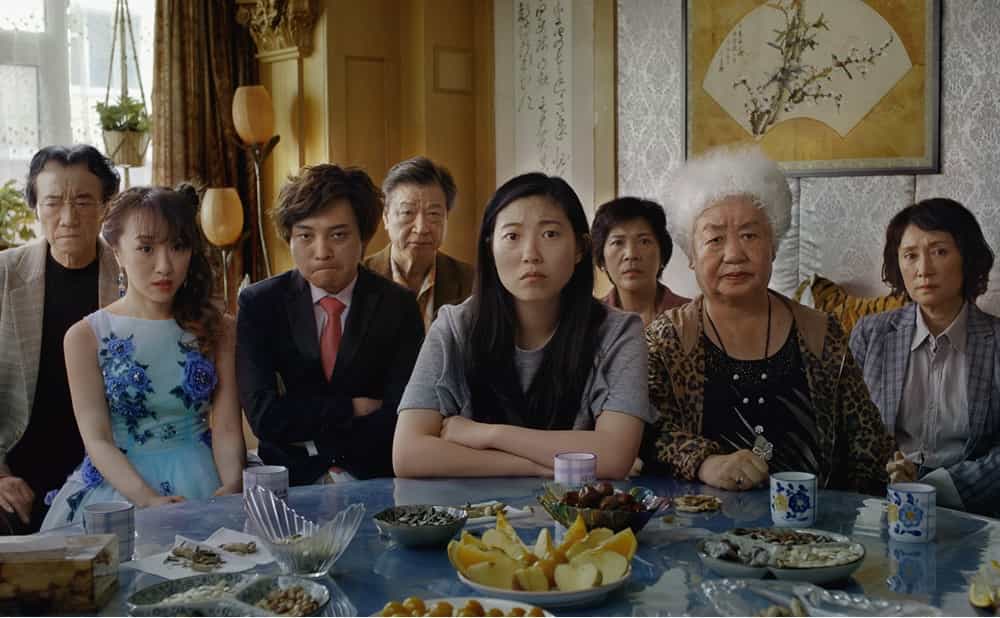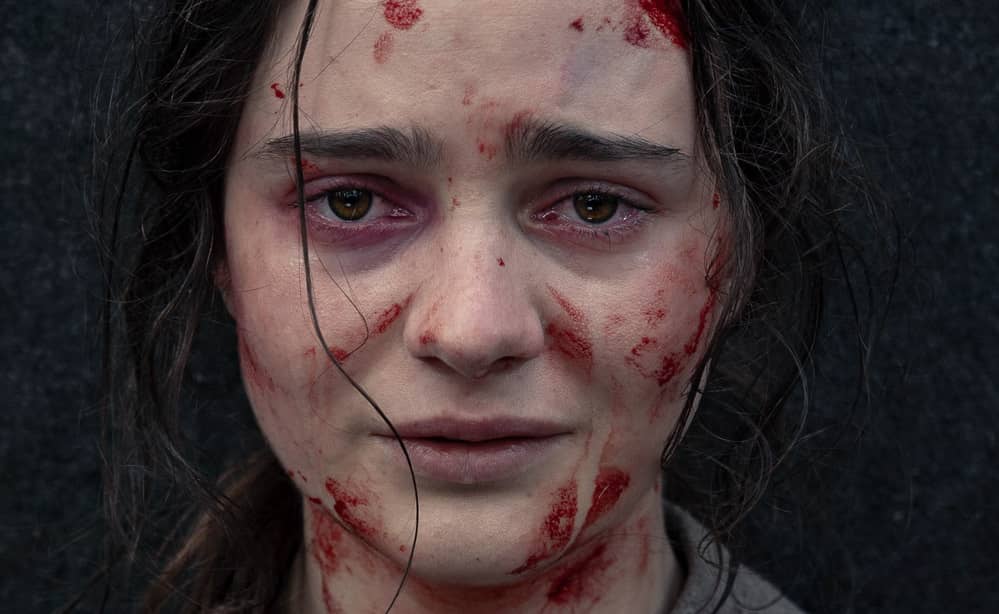Orla Smith recaps the best films of the Sundance London Festival, including Animals, Corporate Animals, The Farewell, and The Nightingale.
Sundance London is a compact festival: this year there were 12 feature films, some shorts programmes, retrospective screenings, and a few panels spread over three and a half days. The festival features a curated selection of the best films that first screened at the Sundance Film Festival in Utah earlier this year.
Over the three years I’ve been attending the festival, I’ve found the selection to be quite strong. I caught eight of this year’s features: none of them were without merit, but four stood out as excellent.
Animals (dir. Sophie Hyde)

Animals is a complex, messy, wildly ambitious film that left me unsure of what to think. But it stuck with me; this tale of toxic female friendship, stunted creativity, and the move from one stage of your life to the next is full of passionately expressed ideas. It may not be polished, but it has a lot to give.
Holliday Grainger and Alia Shawkat are a dynamic pair as flatmates Laura and Tyler. They live a hard-partying lifestyle in Dublin: glamorous women by night, and hungover wrecks by morning. Grainger’s Laura is the protagonist, an aspiring writer who has been working on the same novel for ten years and is still only ten pages in. Shawkat’s Tyler is her enigmatic best friend. She’s dresses like a 1920s aristocrat and speaks like an 18th century poet.
Tyler remains more of an enigma that I would like; it seems like director Sophie Hyde doesn’t completely grasp who this woman is behind her alluring and showy façade. Shawkat is captivating to watch, but the film doesn’t spend enough time with her alone, when she’s not performing to anyone. I almost wish that there had been a perspective shift halfway through, from Laura to Tyler, so that the film would be less one-sided.
However, Grainger is a compelling lead, and Laura’s arc — a party girl who learns to grow up and settle down — is a valuable one, and Hyde is constantly complicating it. Laura thinks she has to change her life from one extreme to another, but she’s only happy when she realises that, actually, there’s an in-between. She finds her place in that middle ground.
Corporate Animals (dir. Patrick Brice)

Corporate Animals was the biggest surprise of the festival. It shouldn’t have been: I’ve liked every single film Patrick Brice has directed thus far (Creep, The Overnight, Creep 2), but his direction is so unassuming that it’s easy to forget just how brilliant he is. This film is no exception.
An absurd comedy set at a corporate team-building getaway in New Mexico, Corporate Animals has my favourite ensemble of the festival. Demi Moore stars as Lucy, the maniacal boss of Incredible Edibles, an edible cutlery company. Her employees are played by Jessica Williams, Karan Soni, and many more, all of whom display impeccable comic timing. Things go awry when Lucy insists the group brave an advanced caving course, because if they can make it through the most dangerous tunnels in New Mexico, they can make it through the world of American business. Of course, everything goes to shit. An earthquake dislodges some rubble and blocks the exit, leaving the team stuck in an underground cave with only edible cutlery as food, unsure if anyone is coming to rescue them.
Corporate Animals is a classic comedy device: take a fractured group dynamic and exacerbate it by trapping said group in a small space together. The claustrophobia of the situation only allows us to focus on what the film is saying about working under capitalism and the hypocritical white feminist ideals with which Lucy runs her business. Brice’s comic timing paired with the cast’s makes for a real riot of a time.
Brice’s direction is casual and unshowy, but it’s not lazy: he makes full use of the cramped space he’s working with, drawing as much visual flavour from the premise as possible. This is a comedy but it’s also quite intense and at times horrifying. For the majority of the film, these characters are stuck in a cave, practically buried alive, and there’s a real sense of fear underlying the humour. At one point, a character complains that she’s having a panic attack, and I felt like I was, too: the way he shoots these human bodies being suffocated by the caves is quite distressing. It gives the film the boost of adrenaline and fear that makes the comedy even sharper.
The Farewell (dir. Lulu Wang)

Lulu Wang’s The Farewell was the talk of Sundance in January, and it seemed to be the most well-liked film to screen in the London edition, too. It’s hard to imagine anyone turning their nose up at this perfectly-pitched, delicate, heartfelt, and incredibly personal story. Based on Wang’s own family drama, The Farewell follows Billi (Awkwafina), a Chinese American woman who returns to China to say goodbye to her dying grandmother. The catch: Billi’s family has decided not to tell Billi’s grandmother about her terminal diagnosis; instead, they stage a fake wedding as an excuse for the whole family to get together one last time.
When I interviewed Wang about The Farewell, she told me that she’s heavily influenced by Mike Leigh and dreams of the kind of intensive rehearsal time he is afforded. You can tell that they are of a similar ilk as filmmakers: the dynamic of Billi’s large family is so rich with history and detail. Wang directs complicated ensemble scenes with a light hand and deft touch. It’s topped off by an unprecedented performance by Awkwafina. Though best known for playing wacky comedic side characters, in The Farewell, she gives a grounded soulful performance that’s both funny and three-dimensional.
The Nightingale (dir. Jennifer Kent)

After a very divisive press screening with walkouts, the festival announced that they would be adding a trigger warning to the beginning of the public screenings of The Nightingale. It wa a smart decision. The film will certainly provoke conversation of the ethics of portraying rape on screen (something Manuela Lazic has explored in her piece on Elle and Big Little Lies). Whether or not you object to the depiction in Nightingale, it’s indisputable that audiences should be allowed to decide for themselves whether they want to subject themselves to graphic, realistic scenes of sexual assault on screen.
Set in Australia in 1825, the film follows a young Irish convict, Clare (Aisling Franciosi), on her mission of revenge through the Tasmanian wilderness. She’s chasing after the British officer (Sam Claflin) who brutally raped her and committed great violence against her family. Clare enlists the help of Billy (Baykali Ganambarr), an aboriginal man, as her guide.
This is only Kent’s second film, but she’s already proven herself as a master craftsman after her feature debut, The Babadook. Nightingale takes after her first feature: it’s so carefully composed and richly atmospheric, it’s chilling to the bone even if it’s not explicitly a horror film. But you can see Kent’s horror roots in the film’s harrowing dream sequences, in which Clare is surrounded by a dark abyss and sees faces looming from the shadows. Kent has a way of shooting these scenes so they don’t feel tacky or cliche, but, instead, genuinely horrifying and earned. It’s in the atypical way she moves her camera and the strange and unexpected details in the sound design, which invoke a deeply etched sense of dread and disorientation. Horror is all about the fear of the unknown, and Kent’s way of putting us into Clare’s confusion and isolation make these sequences all the more terrifying.
The most talked about elements of the film are the multiple, realistic rape scenes. Kent has made a bold and controversial choice on how she believes rape should be depicted in this context: this horrific violence happened, and therefore we should be faced with the reality of it head on. This choice is all of a piece with the rest of the film: Nightingale is a brutal depiction of the unimaginable evil of colonialist Australia, and it pulls no punches in any area of that depiction. In this context, Kent’s depiction of rape is in keeping with the tone and aims of a film that refuses to draw a gauzy screen over the very real history of colonialist brutality.
I’m surprised that all the conversation I’ve heard has been centred around the depiction of a white man raping a white woman rather than the framing of violence against aboriginal people. It’s arguably more problematic that Kent, a white filmmaker, has made a film that explores and depicts the mistreatment of aboriginal people, and yet their stories are secondary to the centered narrative of a white woman. The character of Billy is given a lot of thought and screen-time and beautifully acted by Ganambarr, but no matter how empathetic Kent’s treatment of aboriginal characters and how much thought she puts into their characterisation, it’s still problematic that they aren’t given a starring role in their own story.

